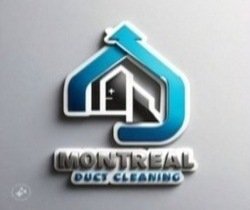Air ducts are an integral component of a building’s heating, ventilation, and air conditioning (HVAC) system. They serve as the conduits through which conditioned air is distributed throughout a space, ensuring that every room receives adequate heating or cooling. The design and functionality of air ducts are crucial not only for maintaining comfortable indoor temperatures but also for ensuring the overall efficiency of the HVAC system.
Properly designed and maintained air ducts can significantly enhance the performance of heating and cooling systems, leading to improved comfort levels and reduced energy costs. The importance of air ducts extends beyond mere temperature control; they play a vital role in maintaining indoor air quality. As air circulates through the ducts, it can pick up dust, allergens, and other pollutants that may be present in the environment.
This means that the cleanliness of air ducts directly influences the quality of the air we breathe indoors. In an age where people spend a significant amount of time indoors, understanding the role of air ducts in our living and working environments is essential for promoting health and well-being.
Key Takeaways
- Air ducts are an essential component of HVAC systems, responsible for distributing heated or cooled air throughout a building.
- Unclean air ducts can lead to poor indoor air quality, causing health issues such as allergies, respiratory problems, and headaches.
- Dirty air ducts can contribute to environmental pollution by circulating dust, mold, and other contaminants into the air.
- Unclean air ducts can reduce energy efficiency by forcing HVAC systems to work harder to maintain desired temperatures.
- Regular maintenance and cleaning of air ducts are crucial for ensuring good indoor air quality, energy efficiency, and overall health and well-being.
The Connection between Unclean Air Ducts and Indoor Air Quality
Unclean air ducts can be a breeding ground for various contaminants, including dust mites, mold spores, pet dander, and pollen. When these particles accumulate within the ductwork, they can be circulated throughout the building every time the HVAC system operates. This can lead to a significant decline in indoor air quality, which is particularly concerning for individuals with respiratory issues or allergies.
Studies have shown that poor indoor air quality can exacerbate conditions such as asthma and lead to other health complications. Moreover, the presence of mold in air ducts is particularly alarming. Mold thrives in damp environments, and if moisture enters the duct system—whether from leaks, condensation, or high humidity levels—it can create an ideal environment for mold growth.
When disturbed, mold spores can be released into the air, posing serious health risks to occupants. Regular inspections and cleaning of air ducts are essential to mitigate these risks and ensure that the air circulating within a building is free from harmful pollutants.
The Environmental Impact of Unclean Air Ducts

The environmental implications of unclean air ducts extend beyond individual health concerns; they also contribute to broader ecological issues. When HVAC systems operate inefficiently due to clogged or dirty ducts, they consume more energy than necessary. This increased energy consumption not only raises utility bills but also leads to higher greenhouse gas emissions from power plants.
In regions where electricity is generated from fossil fuels, this can significantly contribute to air pollution and climate change. Furthermore, unclean air ducts can lead to increased wear and tear on HVAC systems. When airflow is restricted due to dirt and debris buildup, systems must work harder to maintain desired temperatures.
This not only shortens the lifespan of the equipment but also results in more frequent repairs and replacements, which further exacerbates environmental concerns associated with manufacturing and disposing of HVAC components. By prioritizing clean air ducts, we can reduce energy consumption and minimize our carbon footprint.
The Impact on Energy Efficiency
Energy efficiency is a critical consideration for both homeowners and businesses alike. Dirty air ducts can severely hinder the efficiency of HVAC systems, leading to increased energy costs. When airflow is obstructed by dust and debris, the system must exert more effort to circulate air effectively.
In fact, studies have indicated that cleaning air ducts can improve HVAC efficiency by as much as 20%. This improvement not only results in lower energy costs but also contributes to a more sustainable approach to energy consumption.
By ensuring that air ducts are clean and unobstructed, property owners can enjoy a more comfortable environment while simultaneously reducing their energy usage. This dual benefit underscores the importance of regular maintenance and cleaning of air ducts as part of an overall energy efficiency strategy.
Health Implications of Unclean Air Ducts
The health implications associated with unclean air ducts are profound and multifaceted. Poor indoor air quality resulting from dirty ducts can lead to a range of health issues, including respiratory problems, allergies, and even cardiovascular diseases. For individuals with pre-existing conditions such as asthma or chronic obstructive pulmonary disease (COPD), exposure to airborne pollutants can trigger severe symptoms and exacerbate their conditions.
Children and the elderly are particularly vulnerable to the effects of poor indoor air quality. Children’s developing respiratory systems make them more susceptible to allergens and irritants, while older adults may have weakened immune systems that struggle to combat airborne pathogens. Furthermore, studies have shown that prolonged exposure to indoor pollutants can lead to long-term health consequences, including reduced lung function and increased risk of chronic diseases.
Therefore, maintaining clean air ducts is not merely a matter of comfort; it is a critical aspect of safeguarding public health.
The Importance of Regular Maintenance and Cleaning

Recommended Frequency for Air Duct Cleaning
The National Air Duct Cleaners Association (NADCA) recommends having air ducts cleaned every three to five years, although this frequency may vary based on factors such as location, occupancy levels, and specific environmental conditions.
Importance of Regular Inspections
In addition to cleaning, regular inspections of the ductwork can help identify potential issues before they escalate into significant problems. For instance, leaks in ductwork can lead to energy loss and reduced efficiency; addressing these leaks promptly can save money on energy bills while improving overall system performance.
Early Detection of Potential Issues
Moreover, regular maintenance allows for the detection of mold growth or pest infestations within the duct system—issues that require immediate attention to protect occupant health.
Montreal’s Efforts to Address the Issue
Montreal has recognized the importance of addressing indoor air quality issues related to unclean air ducts as part of its broader commitment to public health and environmental sustainability. The city has implemented various initiatives aimed at raising awareness about the significance of clean indoor environments. Educational campaigns have been launched to inform residents about the potential health risks associated with poor indoor air quality and the role that clean air ducts play in mitigating these risks.
Additionally, Montreal has partnered with local HVAC professionals to promote best practices for duct cleaning and maintenance among homeowners and businesses. These partnerships aim to provide resources and support for residents seeking to improve their indoor air quality through proper duct care. By fostering collaboration between government agencies, health organizations, and industry experts, Montreal is taking proactive steps toward creating healthier living environments for its residents.
Conclusion and Call to Action
The significance of clean air ducts cannot be overstated; they are essential for maintaining good indoor air quality, promoting energy efficiency, and safeguarding public health. As we become increasingly aware of the impact our indoor environments have on our well-being, it is imperative that we take action to ensure our air ducts are properly maintained and cleaned. Residents are encouraged to prioritize regular inspections and cleaning of their duct systems as part of their home maintenance routines.
By doing so, they not only enhance their own comfort but also contribute to a healthier community and a more sustainable environment. Local governments and organizations should continue to support initiatives aimed at educating the public about the importance of clean air ducts while providing resources for effective maintenance practices.
If you are concerned about the environmental impact of unclean air ducts in Montreal, you may also be interested in learning about the importance of chimney inspection. Regular chimney inspections can help prevent air pollutants from entering your home and affecting indoor air quality. To find out more about chimney inspection services in Montreal, check out this article. Additionally, if you are curious about the costs associated with air duct cleaning in Montreal and what to expect, you can read more about it here. Lastly, if you are considering DIY air duct cleaning to improve indoor air quality, be sure to follow these helpful tips outlined in this article.
FAQs
What are air ducts?
Air ducts are passages used in heating, ventilation, and air conditioning (HVAC) systems to deliver and remove air. They are essential for maintaining indoor air quality and regulating temperature.
How do unclean air ducts impact the environment?
Unclean air ducts can contribute to indoor air pollution, leading to health problems for occupants. Additionally, they can cause HVAC systems to work less efficiently, leading to increased energy consumption and greenhouse gas emissions.
What are the environmental impacts of unclean air ducts in Montreal?
In Montreal, unclean air ducts can contribute to the city’s overall air pollution levels, impacting the health of its residents and contributing to climate change through increased energy consumption.
How can unclean air ducts be cleaned and maintained to reduce environmental impact?
Regular cleaning and maintenance of air ducts can help reduce their environmental impact. This includes removing dust, debris, and mold from the ducts, as well as ensuring that HVAC systems are functioning efficiently.
What are some other ways to improve indoor air quality and reduce environmental impact?
In addition to cleaning air ducts, using high-efficiency air filters, maintaining proper ventilation, and reducing sources of indoor air pollution can all help improve indoor air quality and reduce environmental impact.


